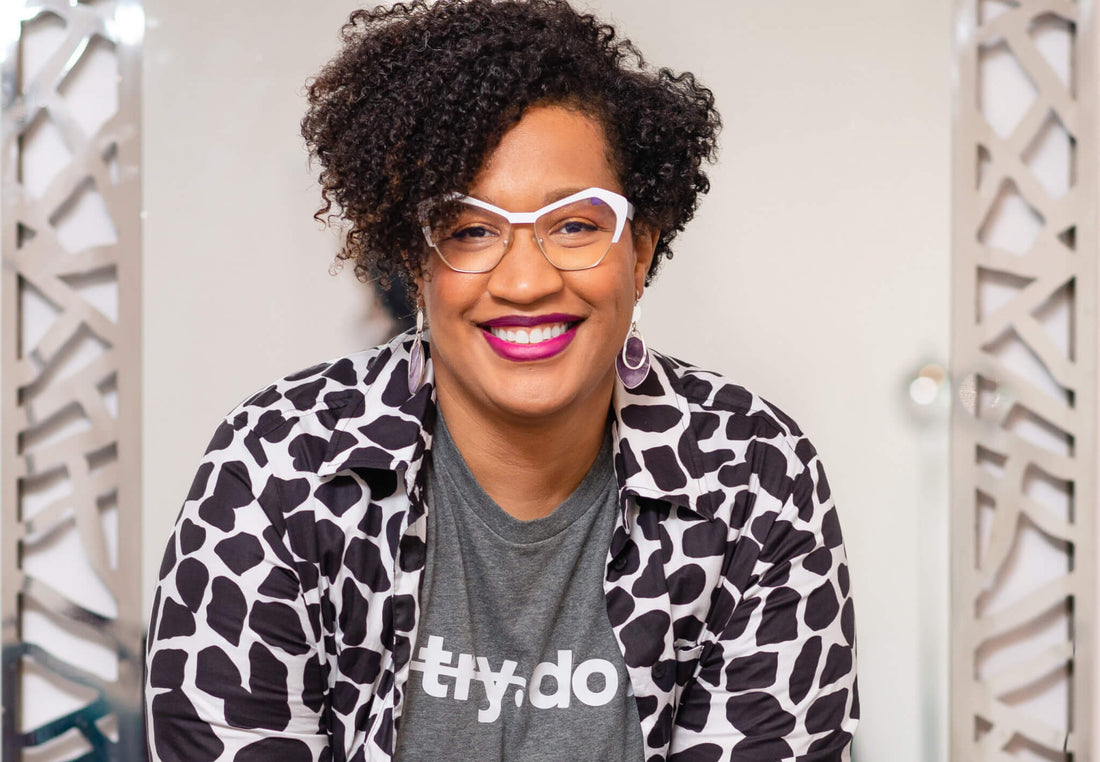As we celebrate Black History Month, we're reminded of the long history of Black hair and how it reflects personal identity. Laws like The CROWN Act (which stands for Creating a Respectful and Open World for Natural Hair), prohibits discrimation based on hairstyle or texture to provide more equality for Black hair in the workplace. At Innersense Organic Beauty, we believe that all hair is beautiful and embracing your natural curl is just one of the amazing ways that can open the door to greater self-love. Aeleise Ollarvia, an Atlanta-based curly hair specialist, founder of Cut It Kinky, and Innersense Organic Beauty artist, offers natural hair care tips below.
The natural hair movement is still booming. What are your thoughts on the experience of embracing a person's natural hair texture?
It's important to understand a bit about the history of why Black women went natural. Around the late '90s, Black women were discovering that relaxer chemicals were creating adverse effects on their health -scalp health and body health. Stylists started avoiding relaxers and using rod sets to avoid the chemicals. It was like we went back to what we were doing in the '50s in terms of pressing, setting, and styling. There was a much bigger drive for Black women to discover their hair for themselves, but didn't have experiences of wearing hair in its natural state. It's a process of self-discovery and a process that counters what the beauty standards were since natural hair wasn't reflected on TV, film, or print. The internet and social media helped the natural hair movement progress so that people could connect to others and build a community with other naturals. I think there's beauty in the rediscovery of self and in the rediscovery of community.
What's your best piece of advice for people who want to go back to their natural curls?
If you're going to transition your hair instead of a big chop, I know there can be a big emotional component because you need be mentally prepared to go through the struggle of your hair not looking its best for one to two years during the transition. My advice has always been to cut your hair off because you'll otherwise end up with two different heads of hair at the same time that don't play well together. There's other stylists, however, that specialize in the transitional process, so you have to find someone who's appropriate for your journey who can help with styling that'll make you feel confident during your transition.
What do you think is the most surprising part when your clients embrace their natural hair?
They find it's easy. Black women have preconceived notions that their hair is hard, it's difficult, it's dry, it's a tumbleweed -all of these things. When they big chop and fully transition and they're done, they actually discover hair could be simple. It doesn't take nearly as long or as many products or methods to work with than they may have thought.
How do you maintain your natural curls after you've fully transitioned?
Ask yourself what your expectations for your hair will be. It's important to think about your lifestyle, climate, and environment when considering your hair care routine. Think about the hair care practices that are going to be sustainable, healthy, and hydrating in the long run. Use cleansers and conditioners.
Are there any practices you need to avoid after you've transitioned your hair to curls?
I don't give people absolutes. I consider hair to be an accessory, but you do have to understand the risks of certain styles. If you want to wear braids, wear braids -just understand that the hair has to go into the braid in a certain condition and you might have less healthier hair when they come out. If someone wants to use a curling iron or straighten their hair, then do it. Though, you may want to have a stylist who can revert or rehab your hair back to the condition you want it to be in if there's heat damage. Have fun with your, but be knowledgeable about what you want your end result to be.


